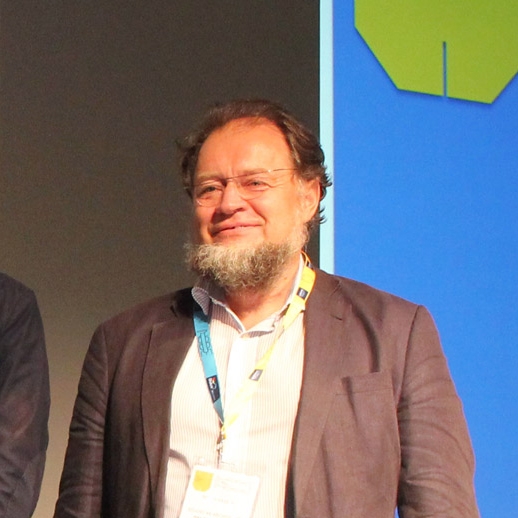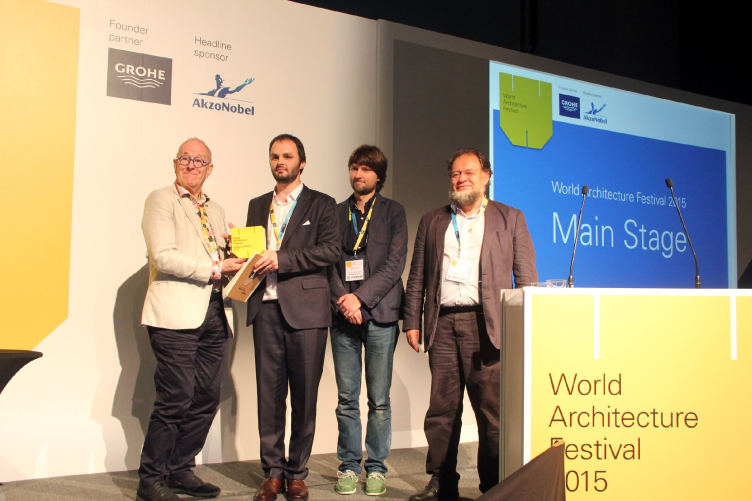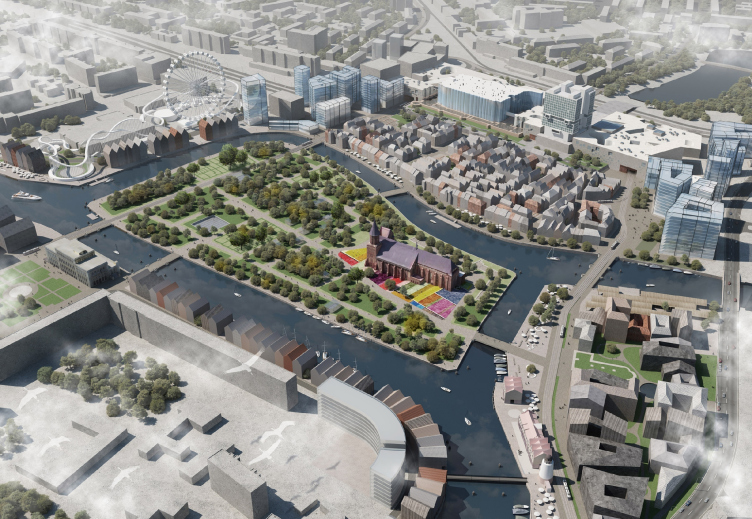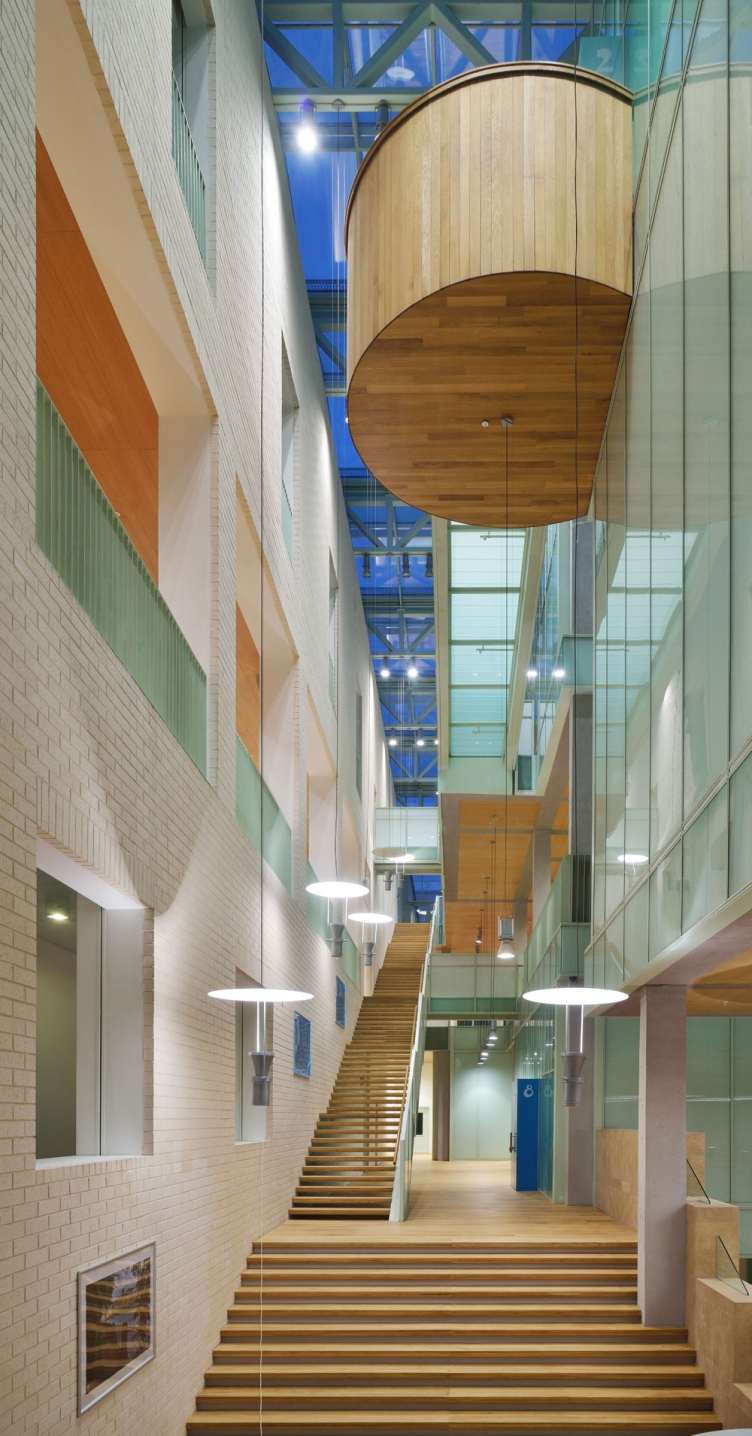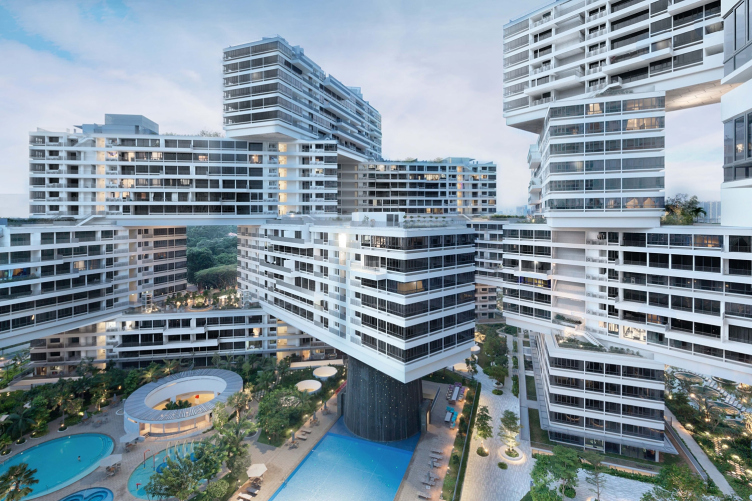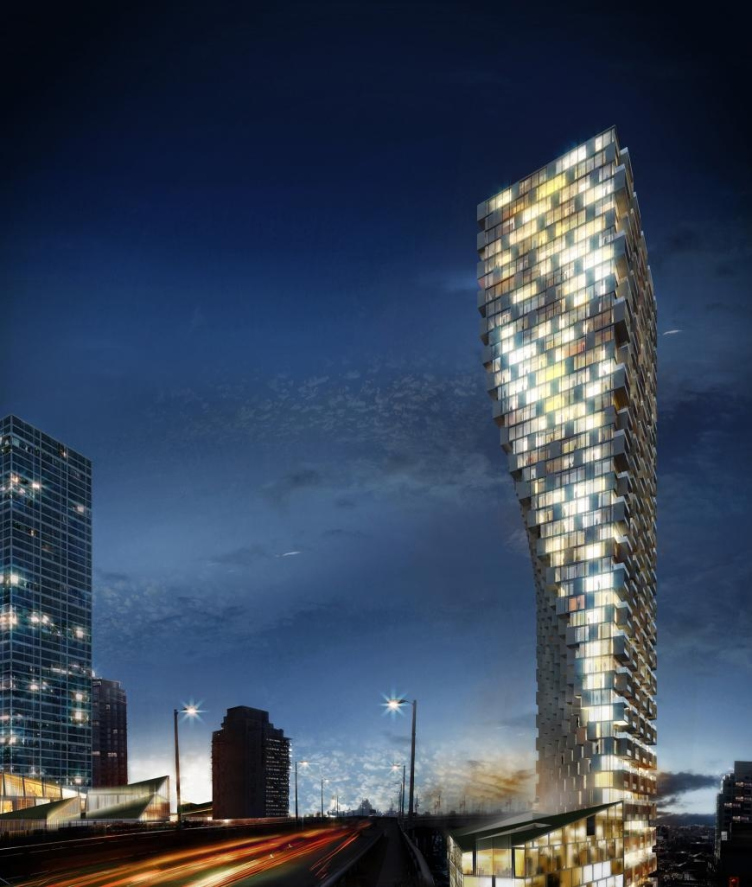- Nikita, my congratulations! If I am not mistaken, your works became Russia's first projects to be ever shortlisted as the winners of WAF nominations. What are your impressions? How did it all work out for you?
My impressions are great, we got a very warm reception. A lot of things were going on simultaneously there, people would go around with the schedule slips marking just which events they wanted to visit, choosing, say, between a Jencks or Cooke lecture or one of a dozen project presentations. So, ultimately, people got interested in us; our first showcase of Kaliningrad was visited by about ten people, then our Hermitage project drew a little over fifty, and, when we were showcasing our school, the room was already filled to capacity. At our last showcase in the major hall, eight hundred or so people turned up.
It was not me who did our presentations - it was the young architects of our company who contributed to these projects and whose English is excellent. I guess we would have gotten shortlisted even last year had I known English better but I have a great command of French, and, this contest being organized by the British, French is of little use there. The official language of the conference is English, the presenter speaks fast, and you have to react and answer quickly, you must be prepared to do that. A lot of presentations were stopped at the 20-minute limit but, as I say, we were received with interest, and our Kaliningrad showcase went on for 25 minutes or so; we were asked a lot of questions.
Nikita Yavein and his colleagues from "Studio 44" are being awarded the WAF prize. Photo courtesy by "Studio 44"
Concept of the developing the downtown area of Kaliningrad (Russia). "Studio 44". © Architectural bureau "Studio 44" and Institute of Territorial Development of Saint Petersburg.
And, besides, last year we presented the Sochi Olympics Central Railway Station - it was right about the time of the Ukrainian crisis, and politics got in the way.
- As far as the Kaliningrad master plan is concerned, were you well ahead of your competition in the nomination?
It was clear from the start that we were winning with Kaliningrad, the project made it in flying colors. Our project was accepted at once and our approach was also understood: it is not about recreating the old buildings and it is not about building new ones from scratch either - it is about one merging with the other in a smart way. The judging panel was also impressed by the diversity of the types of urban planning that we proposed within the framework of the master plan. But then again, I am not sure - if it hadn't been for Altstadt, we might have not won the master plan nomination at WAF.
We had some serious competition there: there was this master plan Battersea Power Station in London by Rafael Vinoli - a high-profile project, these guys were pretty sure of their victory because, I mean, come on, let's be real, it is a British contest, it is the British that set its vectors of development, and, of course, they are interested in their countrymen winning. And, when the questions were asked, they did try to catch us off-guard. This method was quite unexpected for us.
- And how is the Kaliningrad master plan getting along now?
The local architects made a sketch there, some sort of a cross between our proposal and the French project done by the company Devillers et Associés that took the second place. As for Altstadt, it retains our main points; in other areas of the city the project is closer to the French master plan with the city broken into little residential quadrants. There was yet another contest for the castle - we seem to be getting some work there. But everything is in a state of suspended animation because of the lack of finance. The municipality of Kaliningrad counted on some sort of federal subsidies as they do not have their own funds to do that: the crisis is doing things to the city's economy that is generally based on export and import.
- Boris Eifmann Academy of Dance also won in the nomination of schools - how was it received at the presentation?
We were not so sure of it as we were of the master plan but the school building project won it by the sum total of its features. Besides, we showcased it just right, with a small video that allowed people to see how everything operated; we approached that project rather seriously. Judging by how everyone woke up and got interested we realized that we could indeed win, and then we were almost sure of it. And this, considering the fact that the nominee list included Brentwood Academy that got a Stirling Prize this year.
- And did you show your Dance Academy to the judging panel?
We spoke about the idea of the vertical yard. Regular schools have a yard for the children to troop out to during the recess. And, in our project, this vertical yard is a space for dancing, recreation, and lots of other things. This is like a soup with a lot of meat in it. That space is very saturated, a lot of objects are suspended in it, the ballet classes, first of all. And children run around there too... We made a movie about it to show that this vertical connection is something that really works, even better than the "traditional" horizontal one.
And, secondly, the ballet halls are ruled by an atmosphere of detachment. These halls are like a theater of shadows; a space that is totally isolated joins the absolutely open vertical cloister. And you go from one space to the other through a portal, like through some sort of gateway. We deliberately tried to highlight this feature of the building at our WAF presentation.
Boris Eifman Dance Academy © Studio 44
Generally, the overall level of this event is very high - the level of the projects submitted, as well as the level of the major and minor judging panels. Although I would say that in "Culture" nomination the judging board was somewhat strange...
- Was that the judging panel that judged the culture monuments where you showcased your restoration of the Joint Staff that you did for the new wing of the Hermitage?
I think that our Hermitage project was the strongest project in its nomination; it could even stand up to fighting for the Grand Prix but, first of all, it is not quite a "festival-type" project - it is too complex, too integrated, and too sophisticated for a festival. And, second of all, we had a bit of bad luck with the judging panel - there were almost no architects on it. True, there was the editor-in-chief of "Architectural Review" but somebody else was on sick leave, and somebody else came to sit in for them. Either they did not quite understand us or maybe we were unable to get our point across. In the nomination of cultural institutions there was very little competition, I would even say. The winning project - Soma City "home for everyone" took the first place thanks to its social value, compassion for the homeless, and not because of its architectural merits.
State Hermitage, the new Major Enfilade in the east wing of the Joint Staff building, Saint Petersburg © Studio 44
- Do you agree with the judging panel's decision to award the Grand Prix to the residential complex "Interlace" in Singapore? Did you like this project?
In the "Construction" section, it was an obvious leader for a number of reasons. The project is interesting, it's got space about it; I would even say - it "reloads" your perception of space. What matters is that it is about going back to the roots, to the "horizontal skyscrapers", some constructivist basics - they are to be traced especially clearly there. And this project is a very curious one in general; for example, all these angular joints do not give any front views at all. And, at the same time, this is not a "wood stack" either - you maybe remember, there was such a project with blocks in a rectangular grid? In a word, I don't have any questions to the Grand Prix; this is a high-profile constructivist thing that got an award it truly deserves.
Residential cluster "Interlace" (Singapore") OMA / Ole Scheeren. Photo courtesy by WAF
Besides, Interlace is a Singapore building, and WAF was conducted in Singapore this year. Next year, they will move back to Europe, to Berlin. Then they will go someplace else, probably, to somewhere in America. So, predicting the panel's decision wasn't much of a stretch, given the quality of the complex and the political considerations. You do realize that there is a lot of politics in any of such prizes. But, still, today, WAF is the world's most important competition of such kind - not ruled by realtors and developers, and not the kind where all the results are known in advance. In Europe, there is yet another similar contest - Mies van der Rohe Award - it is based on the WAF mechanism, there are slight differences, but generally it's about the same: nominees, constructions, projects, and things... But only countries from the European Union are admitted, so, for us this award is inaccessible. This year, by the way, at WAF there were laureates of Mies, and Stirling - the lineup was very strong.
- And what about BIG's Vancouver House that named "Best Project of the Future"?
- Well, I suppose BIG got the super-prize not because of its architecture - this project is rather controversial - but thanks to the professionalism of its presentation. Our master plan of Kaliningrad, it must be said, was also one of the candidates for the Grand Prix in the "projects" category; we were coming second or maybe third... As for the ideas that were there in this project, we perhaps were even stronger but our presentation fell short - it should have had more vivid imagery to it. We took our old images, and you need to prepare things specifically for WAF. As for BIG, they won at the expense of their consummate mastery of presentation of their material, in this area they are second to nobody, and they turn their every presentation into a theatrical performance.
Vancouver House (Canada). BIG – Bjarke Ingels Group. Photo courtesy by WAF
- How did their mastery specifically manifest itself?
Every element of their project was presented as a solution to some certain global issue. The whole thing is accompanied by the appropriate video sequence. Just before going to Singapore, I went to see "Hamlet" - well, BIG's artists stand up to the world-class professional level. BIG's whole presentation concept is based on such theatrical acts; in fact, they think about how the project will be presented while still in the design stage.
So, as far as the presentation skills are concerned, we are in a different league so far, even though we are getting closer.
- What was the most interesting thing for you at WAF? The presentations, the communication, or the exhibition itself?
The exhibition was a curious thing. It's like a giant open magazine, posters with projects hang all around like bedclothes drying on a line, and people walk among them. Also, the very environment was interesting because there are always like a dozen presentations going on. You simply choose the events that are interesting to you and run from hall to hall.
- For how long have you been taking part in international competitions?
As for WAF, it was our second time there. We didn't win anything last year but I vowed to myself that we would make it this time around. And this year, all the three projects that we submitted got shortlisted, two of them being nominated. I even did more than I committed myself to do.
- Based on your own experience, how would you define the criteria of such victory? We have already spoken about the theater-like presentation; what else do you need to do?
You need to take some very serious ideas that are at the same time current with what is big in the world's architecture right now, and tie them in with the world's processes and books. And you must elaborate on them not with words but with meaningful images. But your ideas must be unconventional and unexpected; you must surprise people with something so that they would get distracted and pay attention to what you're doing. By definition, this whole thing is guaranteed against any kind of provincialism.
- What does participating in such international contests give you?
There are no customers there, there are critics. It is not about getting customers and making money anyway. I do not get that many customers specifically thanks to my awards and prizes, although they may still be instrumental in entering the international markets - this is, for example how I started working in Astana.
It is about the professional growth, of course! And the opportunity to compare what you're doing to what your colleagues and recognized professionals are doing. All the 200–250 projects showcased at WAF were really decent, which is what I like about this contest. In our domestic contests, I often make bets as to who will win and I never lose - all you need to know is the lineup of the judging panel. And here it feels great just not to know in advance who will win.

